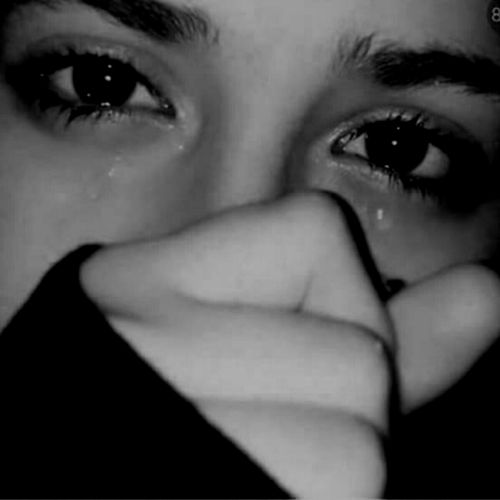Eclipsed Expressions: The Subtle Power of Melancholic Profile Pictures
During the age of social media, a profile picture acts as a glimpse into our identities, moods, and even our innermost thoughts. While many opt for cheerful and colorful images, an unexpected development has emerged: the sad profile picture. This nuanced choice can communicate a range of feelings, from introspection and vulnerability to a basic urge to connect with others on a deeper level. A sad dp image can convey what words sometimes fail to convey, inviting viewers to pause and contemplate on the nuances of human feelings.
The appeal of a sorrowful profile picture lies in its genuineness. It speaks to moments of difficulty or thoughtfulness, permitting individuals to share their stories without speaking a word. In a world often filled by flawlessness and curated happiness, these images bring a sense of relatability and connection. They remind us that it’s acceptable to show our true selves, accepting the full range of feelings that accompany our paths. As we explore the phenomenon of melancholy dp images, we uncover a deep commentary on the human experience and the power of vulnerability in expression.

A Psychological Aspects Of Depressing Profile Pictures
Sad profile pictures often evoke a complex emotional response from viewers. As soon as someone shares their depressing Dp picture, it can create the sense of empathy and connection. This visual depiction of sadness may resonate among people who might have felt akin feelings, fostering a sense of community between those that understand the struggle of emotional turmoil. Such drawing together of shared experiences may facilitate conversations about mental health and personal narratives that might not emerge otherwise.
Additionally, presenting an sad image can be a form of self-expression. Individuals might choose to depict their current emotional state through their profile picture, signaling to their friends and followers that they are going throughout this tough time. dpsad of vulnerability can be disarming yet impactful, frequently inviting support and compassion from others. By revealing one's sadness, individuals may find that they are not alone in the experiences, thereby encouraging the dialogue regarding emotions that is often stigmatized.
Finally, sad profile pictures may challenge societal norms around happiness and positivity. In an world filled by curated images of joy and success, a sad Dp image stands out by embracing the notion that it is okay to feel down. Sad Dp Image against the culture of constant happiness may inspire people to share their true feelings and create an environment where genuine emotional expression is appreciated. Ultimately, these images serve as the reminder that sadness is the universal experience and a important aspect of the human condition.
Cultural Views of Sadness in Online Platforms
In today's digital landscape, the portrayal of sadness through profile pictures has taken on nuanced meanings across different cultures. Although some may view sad images as a reflection of weakness or genuineness, others may perceive them as an invitation for compassion or support. This divergence in interpretation highlights the complexity of emotions conveyed through visual representation on social media platforms. Users carefully curate their digital personas, and for many, a sad profile picture serves as a significant form of expression, indicating to others a moment of sadness without saying a word.
The environment in which these sad images are shared plays a significant role in shaping their reception. In some cultures, displaying sadness openly is valued as a way to foster community and relationships, creating environments where individuals can come together to help one another. In opposition, in cultures that prize stoicism and resilience, a sad profile picture may be met with unease or judgment, leading individuals to self-censor their emotional displays. As social media transcends geographical boundaries, these cultural perceptions collide, creating a rich tapestry of insight around the significance of sad dp images.
Additionally, the frequency of sad profile pictures can stimulate meaningful discussions about psychological well-being and emotional wellbeing. As users engage with these images, they may find themselves thinking on their own feelings, fostering a collective recognition of the struggles others face. This phenomenon can reduce the stigma around sadness, encouraging individuals to seek help or disclose their experiences. In the vast and often overwhelming realm of social media, sad dp images can serve as a reminder that vulnerability is universal, welcoming empathy and connection in ways that go beyond language and cultural barriers.
Effects of Sad Profile Pictures on Digital Interactions

Melancholic profile pictures often evoke compassion and curiosity from others, leading to a powerful emotional connection. When individuals choose to exhibit a sorrowful image, it can encourage friends and acquaintances to reach out, providing support or simply acknowledging their feelings. This exposure can foster more meaningful relationships and facilitate open conversations about mental health and emotional well-being. As users engage with these images, they may feel driven to disclose their own experiences, leading to a sense community among those who connect over each other's struggles.
Additionally, a sorrowful profile picture can influence perceptions and social dynamics within virtual platforms. People frequently interpret these images as indicators of need or distress, which can change the way users interact with the person who is the picture. Others may treat them with more sensitivity, steering clear of jokes or casual interactions that might seem dismissive. This change can alter the overall tone of conversations, leading to more meaningful interactions that emphasize emotional well-being over superficial exchanges.
Lastly, while sorrowful profile pictures can create an avenue for support, they can also attract negative attention or unwelcome pity. Some may feel apprehensive reaching out or fear saying the wrong thing, leading to loneliness rather than connection. Additionally, this can affect the way others perceive a person, potentially leading to stigmatization. Thus, while dpsad hold the power to foster connection, they also carry the significance of social implications that must be navigated carefully.
